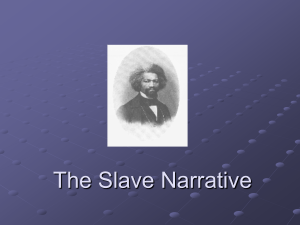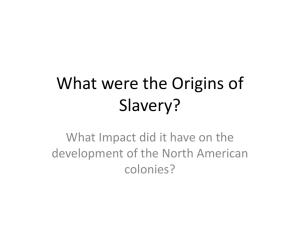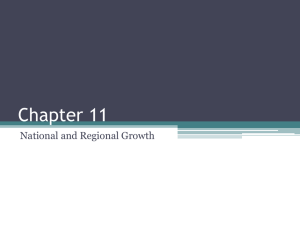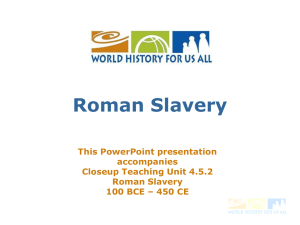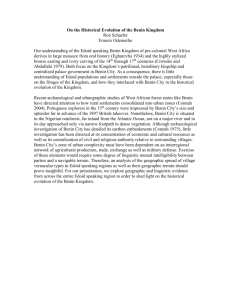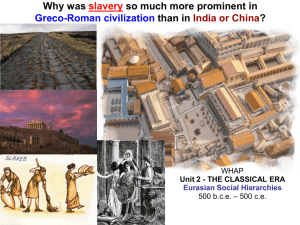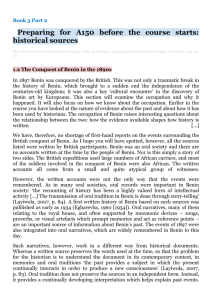BeninWestAfrica
advertisement
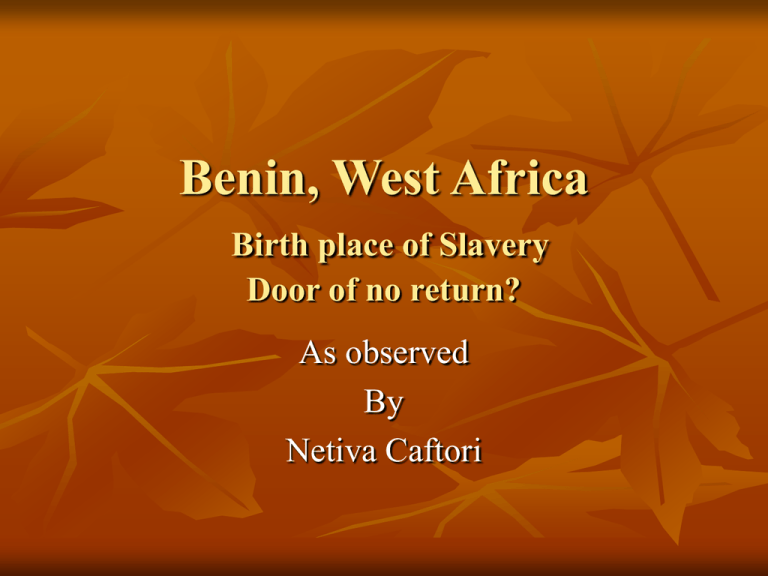
Benin, West Africa Birth place of Slavery Door of no return? As observed By Netiva Caftori Ouidah, Benin History The Portuguese began trading African slaves in Europe in the 1440s, and by the early 1500s ships filled with slaves captured in Africa began sailing across the Atlantic to the New World. During the four centuries of the trans-Atlantic slave trade, an estimated 12 million Africans were taken from their continent and brought to the New World and Europe. Benin, home to ancient kingdoms Allada, Abomey, Porto-Novo, Kétou, Tchabê, Nikki, Kouandé, and Djougou They thrived on the commerce of slavery till its abolition in 1807, then on palm oil. England, Denmark, Portugal and France 1704-Ouidah-French 1752-Porto-NovoPortuguese Door of no Return Slavery Legacy The old slave route to the spot on the beach where it is believed the terrified captives boarded ships for the "Middle Passage" -- the route across the ocean to the New World. Many would not survive the trip, cut down by disease, malnutrition, abuse or neglect. Some myths according to Kenneth Addison African-Americans came from an uncivilized continent (arrived in North America in 1619) Africans came to the Americas only as slaves Only 10 Million African slaves Africans enslaved their own ethnic groups Slavery was coercive but not brutal Slavery does not affect African-Americans today (abolished in 1865 in US) African-Americans have contributed little to America Memorial to those who perished Ghana Acknowledge the truth-seek forgiveness: Kerekou "The kings of Dahomey -- located in Abomey, in present-day Benin -- aggressively captured and sold neighboring tribespeople to the slavers. The practice was quite developed, and went on for some three centuries.“ The story of the slave trade is kept alive in the songs of village griots, or tribal storytellers, who sing the history of the slave-conquering kings of Dahomey. Ouidah, Temple of the pythons The slave trade was officially banned in the early 1880s "The slave trade could not have endured for four centuries and carried nearly 12 million people out of Africa without the cooperation of a huge network of African rulers and merchants," Prof. Harms of Yale is the author of The Diligent: A Voyage Through the Worlds of the Slave Trade, an award-winning book detailing the day-to-day routine on a French slave vessel in the 1700s. Modern slavery in Benin Benin is a source, transit, and destination country for children (seven to 18) trafficked for the purposes of forced domestic and commercial labor, including child prostitution. Estimates on the numbers of trafficking victims range between a few hundred and several thousand each year. Beninese children are trafficked to oil-rich Nigeria, Ghana, Gabon, Cote d’Ivoire, and Cameroon into forced labor situations, including agricultural labor, quarries, domestic service, and prostitution . Door of return Socio-cultural groups Fon (35%), Adja, Yoruba, Goun, Bariba, Dendi, Somba, Peuhl, etc.. Languages: Fongbé, Gengné or Mina, Yoruba, Baatonu, Dendi, Bariba, Adja-gbe, Ayizo-gbe, Ditammari, Tem, Peul 6.2 M Beninese: Cotonou: 850,000 Porto-Novo: 200,000 Parakou: 110,000 Abomey: 70,000 Natitengou: 60,000 Economy 80% of the people in agriculture 40% gnp Corn, manioc, beans, pineapples, rice Export cotton (80%), palm oil & peanuts Industry is poor: textile, cement, mines, alimentation. Commerce: Cotonou is between Lome and Lagos & closest to Mali & Burkina Faso.





